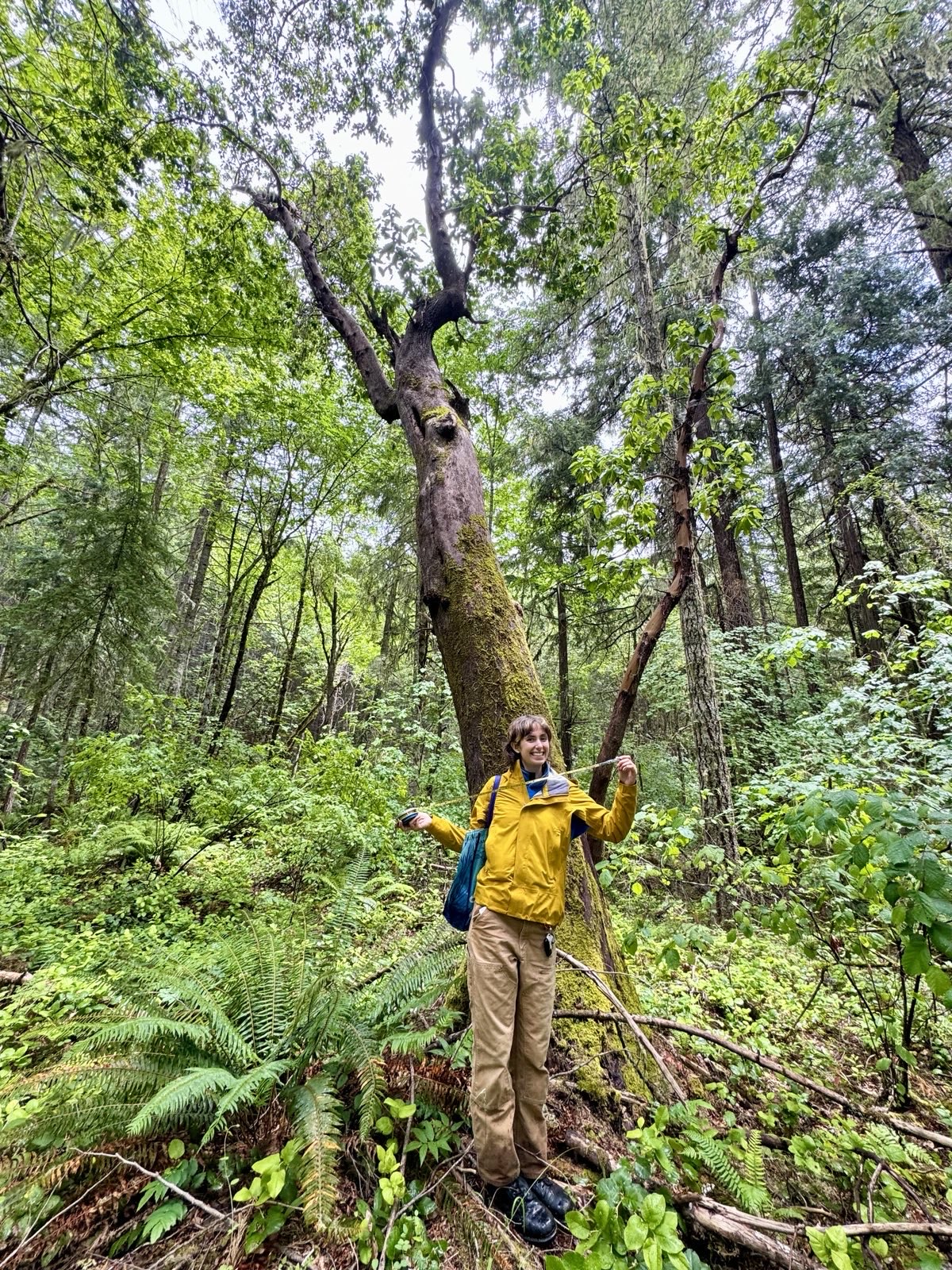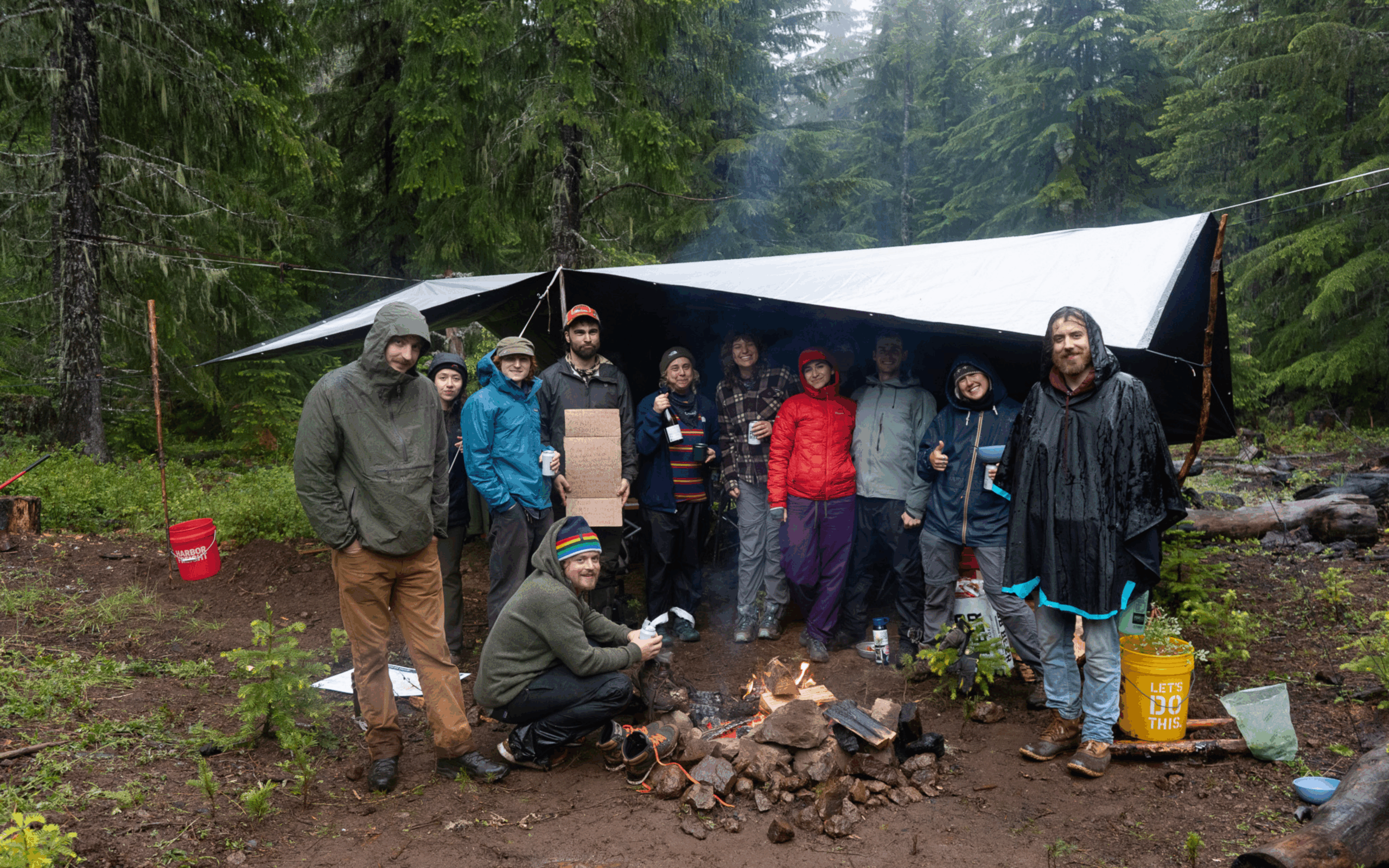By Flora Booker, 2025 Summer Field and Events Coordinator
From June 20 to 23, Cascadia Wildlands held our biggest volunteer event of the year: the WildCAT Field Checking Basecamp. Volunteers gathered near Glide, Oregon, to help stop logging in some of the most breathtaking old-growth ecosystems in the Little River watershed.
The area lies within the traditional homelands of the Cow Creek Band of Umpqua Tribe of Indians. Their ancestors include Upper Umpqua, Takelma, Molalla, and Yoncalla peoples who have lived in and traveled through the South Umpqua River basin since time immemorial. We encourage support for Indigenous-led environmental justice efforts, including Cow Creek youth-led programs like Tuú Yap’a Xumá, which teaches traditional plant cultivation.
Throughout the weekend, WildCAT volunteers worked to field-check seven units in the proposed Bureau of Land Management (BLM) timber sale. Field checking is the process of documenting on-the-ground conditions of a forest to challenge or stop harmful logging projects. As we documented the threatened forests on the ground, news of even broader threats at the federal level began to surface. The Summer Solstice arrived under dark clouds that seemed to reflect our growing frustration over Trump’s plan to rescind the Roadless Rule and open millions of acres of public lands to logging. Rain fell steadily, turning at times to hail and wet snow. Still, spirits stayed high. Thanks to a well-tended fire and delicious meals made by our amazing volunteers, we stayed warm, nourished, and ready to keep going. Despite the elements, we successfully field-checked all of our targeted units.
Along the way, we trekked through dense forests, open meadows, and misty waterfalls teeming with life. We spotted mycoheterotrophs (partly or entirely non-photosynthetic plants that obtain energy and nutrients from fungi) like coralroot, gnome plant, and ghost pipe pushing up through the soil. These rare plants thrive in biodiverse ecosystems that support the complex symbiotic relationships they depend on. We admired Pacific madrones with their purple peeling bark, sprawling California black oaks, and towering old growth trees with broken tops that create prime nesting habitat for northern spotted owls.

Several trees with diameter-at-breast-height measurements over 70 inches towered above us, including ancient Douglas firs wide enough for our whole group to wrap around. Their massive trunks offered calm to each of us, while also providing critical habitat for countless other species. We found waterways that had not been marked by the Bureau of Land Management, recorded signs of wildlife ranging from bear to coyote, and watched a bright green Pacific tree frog launch itself confidently into the duff.
On our final day, we gathered under the freshly shining sun, grateful for its warmth, and each shared a teaching we were taking from Basecamp and a gratitude for one another. I was sure the first comment would make us chuckle, something like “I learned to bring a darn good quality rain jacket!”. But instead, every single person offered something thoughtful. People spoke about their gratitude for the fire tenders and the care put into our shared meals. They reflected on joyful moments of connection with the life around us, on noticing things they hadn’t seen before, and on the kindness exchanged between all of us. What remained with us was the meaningful community we built and the vital field checking we accomplished together.
Now that the field checking is complete, Cascadia Wildlands will submit the data and detailed comments gathered by our volunteers to the Bureau of Land Management. If the agency fails to listen, we’re prepared to challenge the sale through legal action.To everyone who showed up, thank you. Your presence made this trip what it was. And for those who couldn’t join this time, we hope to see you at the next one. There are more old-growth ecosystems to stand up for, and more work ahead to care for the places we love.

